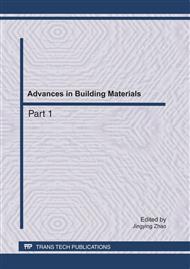p.555
p.561
p.566
p.571
p.576
p.581
p.586
p.591
p.596
Comparing Hysteretic Behavior of Flexible Piers with Different Stirrup Ratio and Slenderness Ratio
Abstract:
Flexible piers have been widely used in bridge engineering due to its superior ductility. The stirrup ratio and slenderness ratio were deemed to have a most important impact on hysteretic behavior of them. Five flexible piers were made under static vertical loads and low cyclic horizontal reversed loads. The process of test was introduced and failure mechanism, hysteretic behavior, skeleton curve, ductility, energy dissipation capacity, and stiffness degeneration of flexible piers were analyzed. Experimental studies show that (1) Failure mode of specimen is bending failure and their ductility factor falls between 4.15 and 6.30; (2) displacement ductility factor improves with increasing of the stirrup ratio. Stirrup could greatly improve the capacity on ductility and energy dissipation, while it has little impact on the bearing capacity; (3) ultimate bearing capacity decline with the increase of slenderness ratio, however, when the slenderness ratio member is larger, the hysteresis curve is fuller and energy-dissipation is better.
Info:
Periodical:
Pages:
576-580
Citation:
Online since:
May 2011
Authors:
Price:
Сopyright:
© 2011 Trans Tech Publications Ltd. All Rights Reserved
Share:
Citation:


